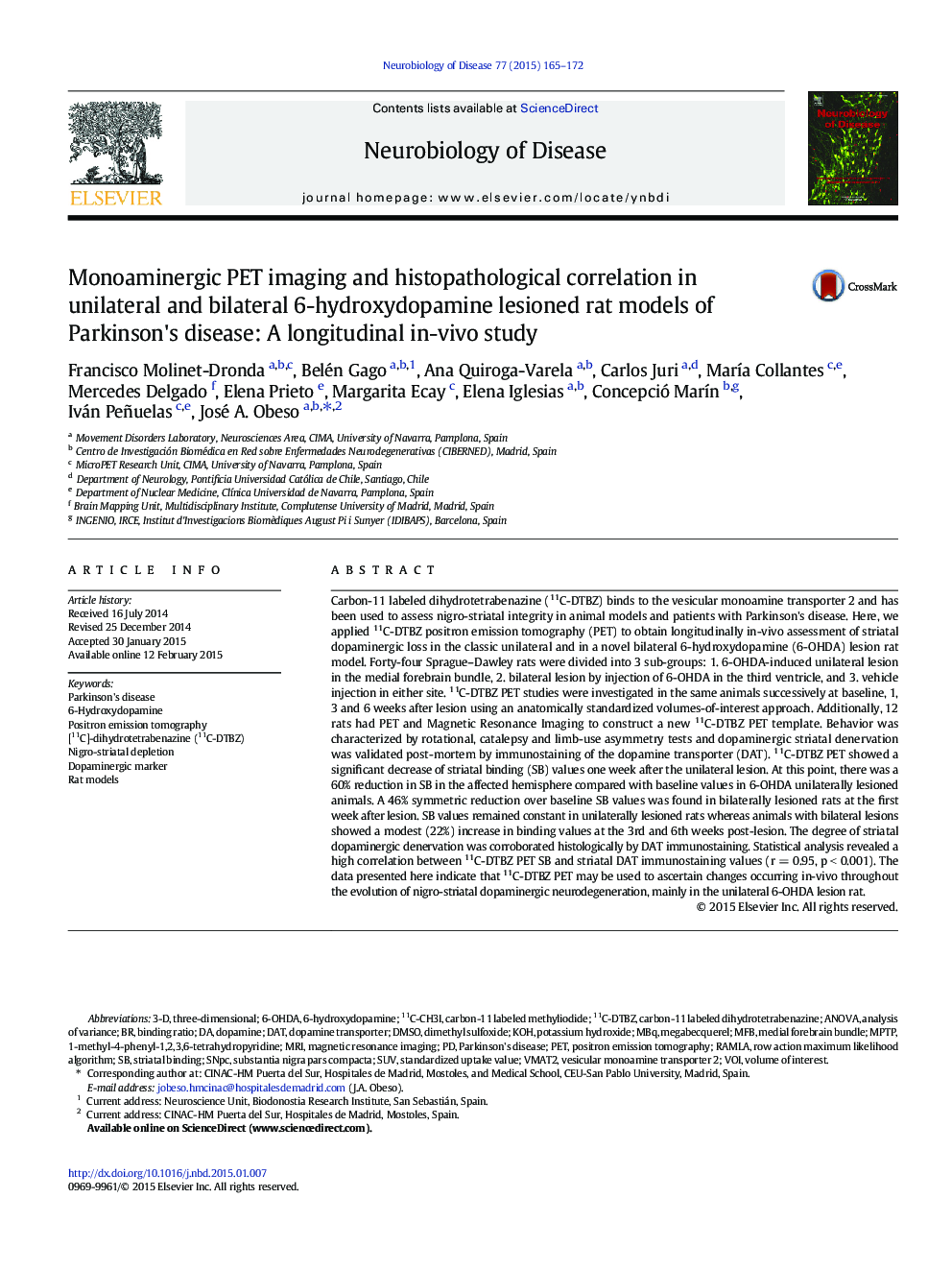| کد مقاله | کد نشریه | سال انتشار | مقاله انگلیسی | نسخه تمام متن |
|---|---|---|---|---|
| 3069351 | 1580646 | 2015 | 8 صفحه PDF | دانلود رایگان |

• Evaluation of nigro-striatal lesion in the unilateral and bilateral 6-OHDA rat models
• 11C-dihydrotetrabenazine (11C-DTBZ) PET binding was highly correlated with histology.
• The reduction in PET uptake remained constant over time in unilateral lesions.
• A modest improvement in 11C-DTBZ values was shown 3 weeks after bilateral lesion.
• 11C-DTBZ PET appears sensible to detect a range of changes in striatal innervation.
Carbon-11 labeled dihydrotetrabenazine (11C-DTBZ) binds to the vesicular monoamine transporter 2 and has been used to assess nigro-striatal integrity in animal models and patients with Parkinson's disease. Here, we applied 11C-DTBZ positron emission tomography (PET) to obtain longitudinally in-vivo assessment of striatal dopaminergic loss in the classic unilateral and in a novel bilateral 6-hydroxydopamine (6-OHDA) lesion rat model. Forty-four Sprague–Dawley rats were divided into 3 sub-groups: 1. 6-OHDA-induced unilateral lesion in the medial forebrain bundle, 2. bilateral lesion by injection of 6-OHDA in the third ventricle, and 3. vehicle injection in either site. 11C-DTBZ PET studies were investigated in the same animals successively at baseline, 1, 3 and 6 weeks after lesion using an anatomically standardized volumes-of-interest approach. Additionally, 12 rats had PET and Magnetic Resonance Imaging to construct a new 11C-DTBZ PET template. Behavior was characterized by rotational, catalepsy and limb-use asymmetry tests and dopaminergic striatal denervation was validated post-mortem by immunostaining of the dopamine transporter (DAT). 11C-DTBZ PET showed a significant decrease of striatal binding (SB) values one week after the unilateral lesion. At this point, there was a 60% reduction in SB in the affected hemisphere compared with baseline values in 6-OHDA unilaterally lesioned animals. A 46% symmetric reduction over baseline SB values was found in bilaterally lesioned rats at the first week after lesion. SB values remained constant in unilaterally lesioned rats whereas animals with bilateral lesions showed a modest (22%) increase in binding values at the 3rd and 6th weeks post-lesion. The degree of striatal dopaminergic denervation was corroborated histologically by DAT immunostaining. Statistical analysis revealed a high correlation between 11C-DTBZ PET SB and striatal DAT immunostaining values (r = 0.95, p < 0.001). The data presented here indicate that 11C-DTBZ PET may be used to ascertain changes occurring in-vivo throughout the evolution of nigro-striatal dopaminergic neurodegeneration, mainly in the unilateral 6-OHDA lesion rat.
Journal: Neurobiology of Disease - Volume 77, May 2015, Pages 165–172